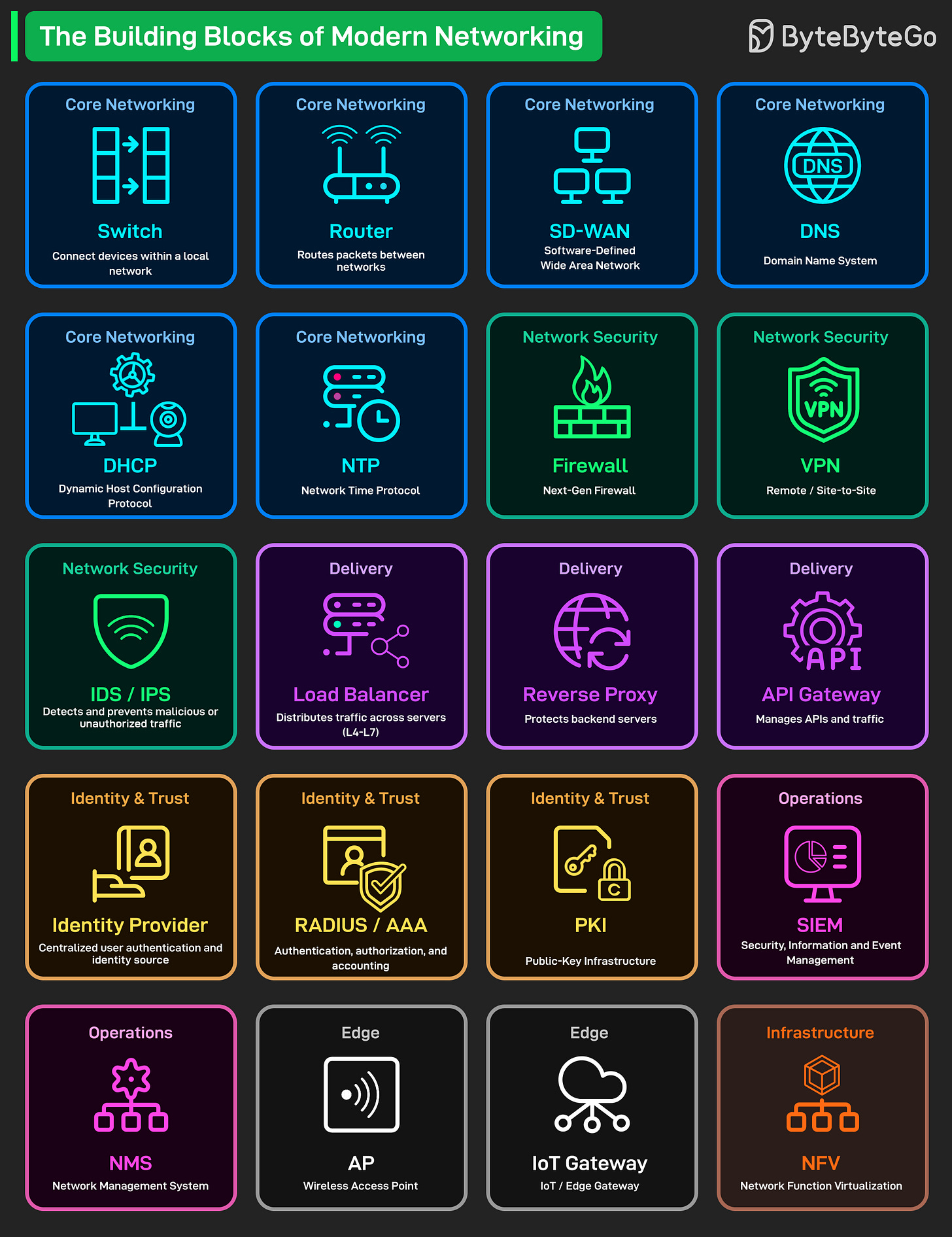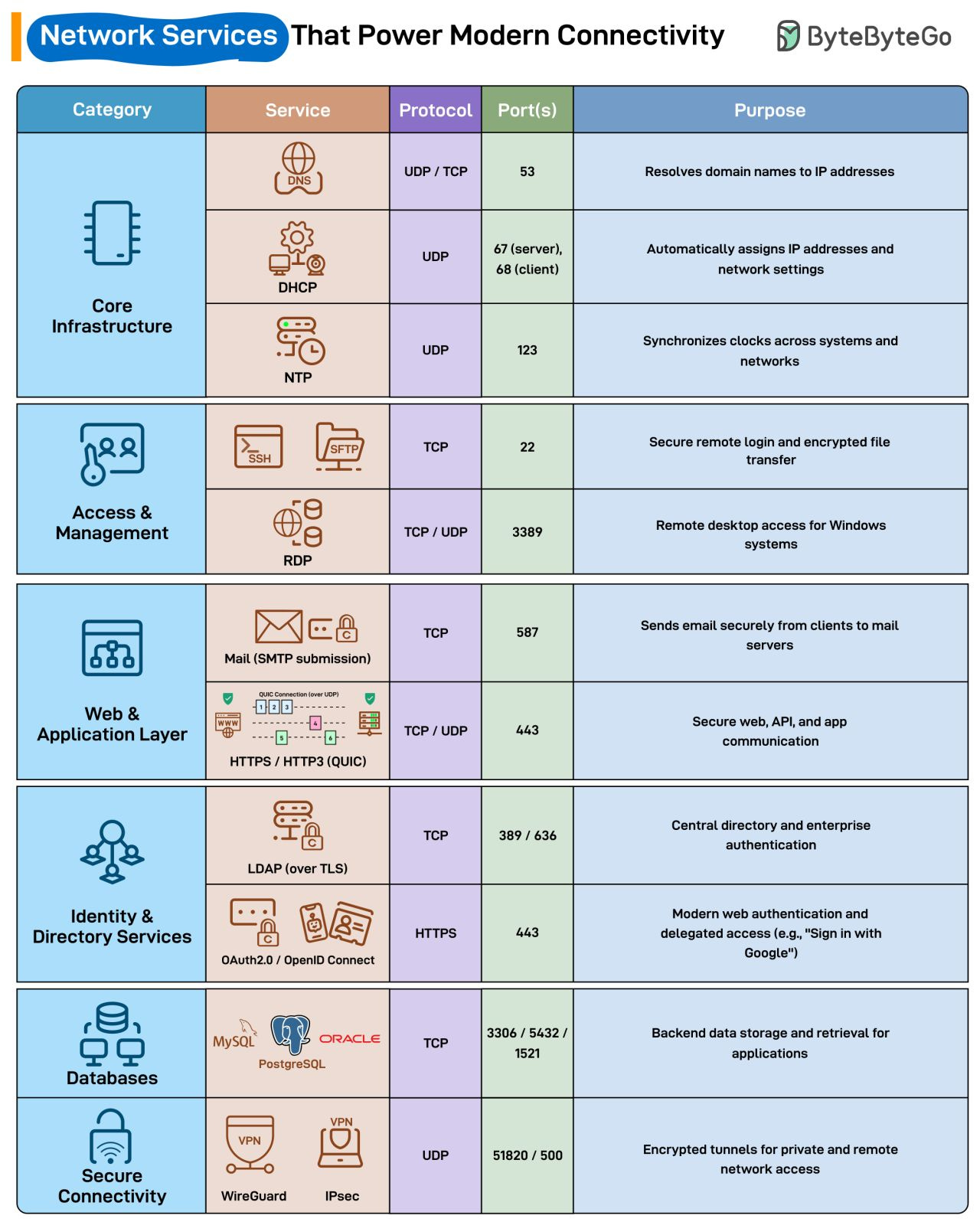EP188: Servers You Should Know in Modern Systems
The Developer’s Guide to MCP Auth (Sponsored)
Securely authorizing access to an MCP server is complex. You need PKCE, scopes, consent flows, and a way to revoke access when needed.
Learn from WorkOS how to implement OAuth 2.1 in a production-ready setup, with clear steps and examples.
This week’s system design refresher:
Design a Web Crawler: FAANG Interview Question (Youtube video)
The AI Engineering Cohort 2 Starts Today!
Servers You Should Know in Modern Systems
What is Prompt Engineering? (Youtube video)
The Building Blocks of Modern Networking
Network Services That Power Modern Connectivity
SPONSOR US
Design a Web Crawler: FAANG Interview Question
The AI Engineering Cohort 2 Starts Today!
This is a live, cohort-based course created in collaboration with best-selling author Ali Aminian and published by ByteByteGo.
Here’s what makes this cohort special:
Learn by doing: Build real world AI applications, not just by watching videos.
Structured, systematic learning path: Follow a carefully designed curriculum that takes you step by step, from fundamentals to advanced topics.
Live feedback and mentorship: Get direct feedback from instructors and peers.
Community driven: Learning alone is hard. Learning with a community is easy!
We are focused on skill building, not just theory or passive learning. Our goal is for every participant to walk away with a strong foundation for building AI systems.
If you want to start learning AI from scratch, this is the perfect time to begin.
Servers You Should Know in Modern Systems
What is Prompt Engineering?
The Building Blocks of Modern Networking
Every modern network, from home Wi-Fi to global cloud infrastructure, is built on a few essential components. Here’s a quick overview of the Building Blocks of Modern
Networking:
Core Networking: Switches connect devices within a local network. Every office has dozens of these. Routers move packets between different networks. Your gateway to the internet and beyond. SD-WAN is how modern companies connect branch offices. Software-defined, flexible, way cheaper.
DNS translates domain names to IP addresses. DHCP hands out IP addresses automatically. NTP keeps clocks synchronized across all systems.
Network Security: Firewalls are your first line of defense. Next-gen versions can inspect traffic at the application level. VPNs create encrypted tunnels for remote access and site-to-site connections. Remote work runs on this. IDS/IPS detects and blocks malicious traffic before it reaches your servers.
Delivery (Traffic management): Load Balancers distribute requests across multiple servers. One server goes down? Users never notice. Reverse Proxy sits in front of your backend servers, handling SSL termination and caching. API Gateway manages all your API traffic.
Identity & Trust: Identity Provider is your single source of truth for user authentication. Think Okta, Azure AD, Auth0. RADIUS/AAA handles network device authentication. PKI manages digital certificates and encryption keys. HTTPS wouldn’t exist without it.
Operations: SIEM collects and analyzes security events from across your entire infrastructure. NMS monitors network health and performance. Alerts you before users start complaining.
Edge: Access Points provide WiFi coverage. IoT Gateway connects sensors, cameras, and smart devices to your network. The bridge between operational tech and IT.
Infrastructure: NFV runs network functions as software instead of dedicated hardware. Virtual firewalls, virtual routers, virtual everything.
Over to you: What component from this list do you want a deep dive on next?
Network Services That Power Modern Connectivity
Every time you open a browser, send an email, or connect to a VPN, these network services quietly make it possible.
DNS: Resolves domain names to IP addresses so users can reach websites without memorizing numbers.
DHCP: Automatically assigns IPs and network settings to devices joining the network.
NTP: Keeps clocks synchronized across systems to ensure consistent logs and authentication.
SSH: Enables secure remote login and encrypted file transfers over port 22.
RDP: Allows remote desktop access to Windows systems through port 3389.
Mail (SMTP submission): Sends emails securely from clients to mail servers.
HTTPS / HTTP3 (QUIC): Secures web, API, and app communication over encrypted channels.
LDAP (over TLS): Acts as a central directory for enterprise logins and access control.
OAuth2.0 / OpenID Connect: Powers modern authentication flows like “Sign in with Google.”
MySQL / PostgreSQL / Oracle: Handle backend data storage and retrieval for web and mobile applications.
WireGuard / IPsec: Create encrypted tunnels for private and remote network access.
Over to you: When something breaks, which protocol do you check first, DNS, DHCP, or HTTPS?
SPONSOR US
Get your product in front of more than 1,000,000 tech professionals.
Our newsletter puts your products and services directly in front of an audience that matters - hundreds of thousands of engineering leaders and senior engineers - who have influence over significant tech decisions and big purchases.
Space Fills Up Fast - Reserve Today
Ad spots typically sell out about 4 weeks in advance. To ensure your ad reaches this influential audience, reserve your space now by emailing sponsorship@bytebytego.com.






